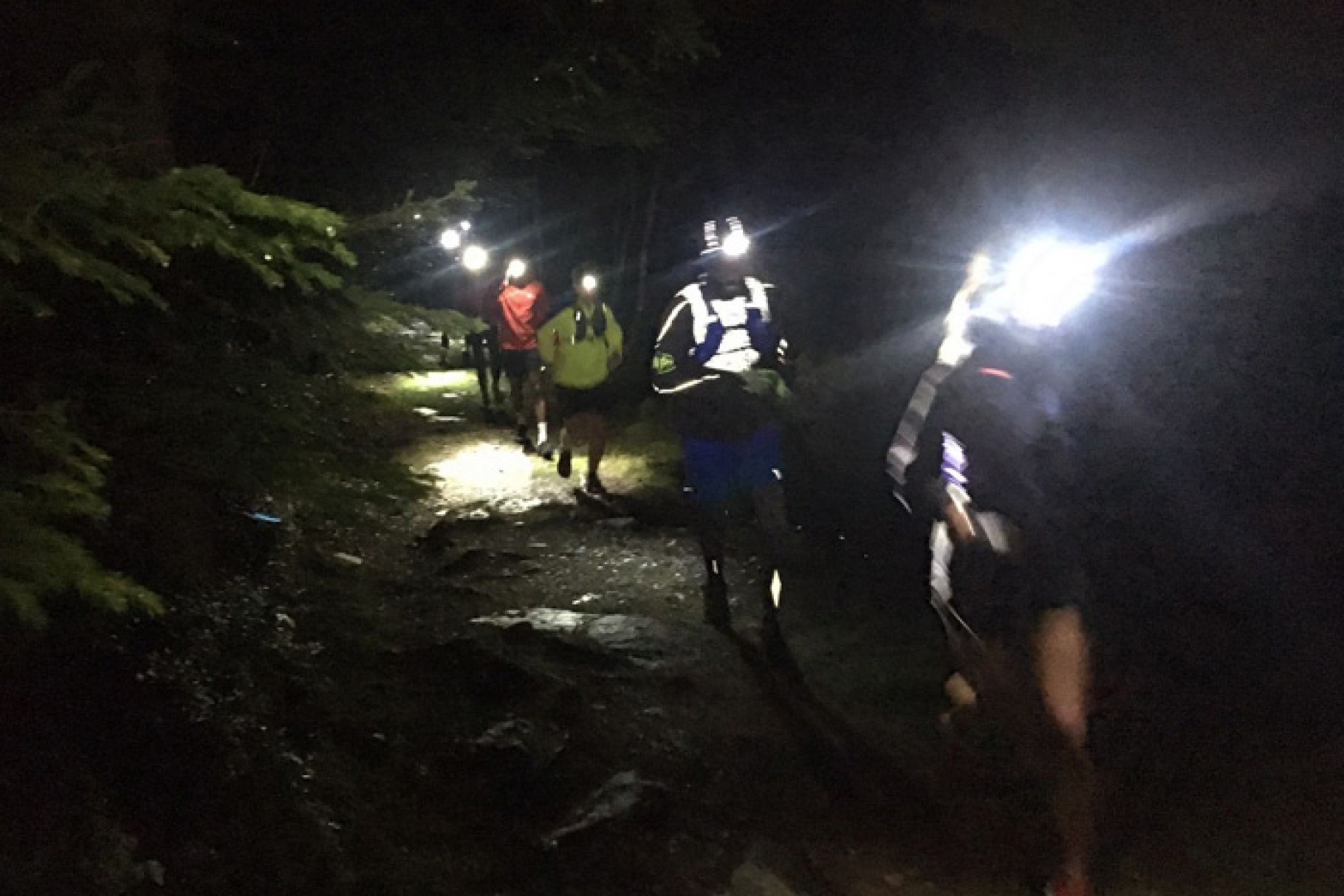
A guide to choosing a suitable headtorch for running or hiking, to help light up those dark nights and see you safely through from dusk until dawn.
Whether you’re heading out for an evening run, got caught out as the sun set on a hike, or just finding your way to the campsite facilities, a decent headtorch will make all the difference. Advances in lighting capacity and battery technology now offer us a dazzling range to choose from, depending on our budget and needs. Simple models with minimal adjustment sit alongside more advanced models, offering programmable lighting modes, multiple beams, and even intelligent reactive lighting that economises battery power.
When choosing a headtorch, it’s important to consider brightness, beam range, battery life (and type of battery), weight, robustness and price. The outdoor orientated brands will generally be fit for purpose and at least weather-resistant. Newer innovations bring an additional cost, and may be surplus to requirements.
Check out this useful comparison chart from our partners at Facewest.
One frustrating design flaw of many headtorches is the ease with which they can be switched on while in your bag. Some models include a lock function (Petzl Nao, LED Lenser NEO6R) or the ability to detach the battery wire (Suprabeam V4) to prevent this, but you can always remove the batteries when stowed in your bag. For longer trips it’s essential to have spare batteries stored in a dry bag.
While the top end models are expensive, impressive light output (measured in lumens) that lasts, and sits comfortably on your head, is now commonplace and affordable. The added advantage of all this choice at a range of prices is that you don’t have to try and find one headtorch for everything.
The lighting requirements for different activities make it hard to recommend the ultimate headtorch, so we’ve broken down some options for you for several scenarios. One caveat when making your choices: the more committing or remote your activity, the greater the importance of choosing a robust, well tested model that has a back-up. Some bits of kit are worth that extra investment, since without them you risk being benighted and having to suffer through until dawn breaks. That can either be character forming, type II fun, or a life-threatening situation in the wrong conditions.
It’s good to try out different models for fit and feel instore, otherwise ask your contacts for recommendations and research online for user reviews to make an informed choice. With the right headtorch, you can enjoy the unique, immersive thrill of moving through the darkness and exploring the trail day and night.
Lightweight, waterproof, rugged, comfortable and bright. You don’t want to scrimp when it comes to running in the dark, especially if you head off-road. The better you can see, the faster you can go!
You could opt for a lighter model with less battery capacity for your local runs, but ensure you are also being seen while on the road with suitable reflective clothing. Certain models (see below) include a rear red light. In practice, it’s worth choosing a torch with a minimum of 180 lumens for local runs on the road and easy trails, and over 300 lumens for anything off-road and more technical.
If you’re planning on entering any trail races that involve night sections, you should seriously consider something a bit heavier with higher lumens and longer battery life. A light weight back-up can then be stowed in your bag, along with spare batteries. Ensure you check the kit rules well ahead of the race and always keep spare batteries in your trail pack for longer runs.
If you’re going to be navigating, the intelligent light modes of the more expensive models help reduce the glare when looking at a map. They also reduce the brightness when facing other people, so you don’t end up blinding them!
Keeping the weight down is important for your hiking trips, but it depends on the nature of your trip. Are you doing day hikes, returning to the valley base each day? In this case, a lightweight model should be adequate to cover you if you’re doing pre-dawn starts or take longer getting off the hill than anticipated.
If you’re planning to be out late into the night, and you know the terrain will be complex, then opt for something brighter and more robust. For multiday hikes between refuges in the high country, it’s essential to carry spare batteries and the charging cable if applicable (with country-specific adapter) to recharge in huts when possible. Consider marking your torch/cable/adapter since you often have to use a communal socket in the main hut room. Otherwise consider a lightweight powerbank.
It’s also worth bringing a second, lightweight headtorch, to use when you’re at the hut or camp, to save your main torch for when you need it on the trail.
Geonaute (by Decathlon)
